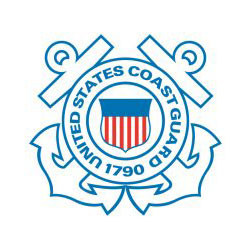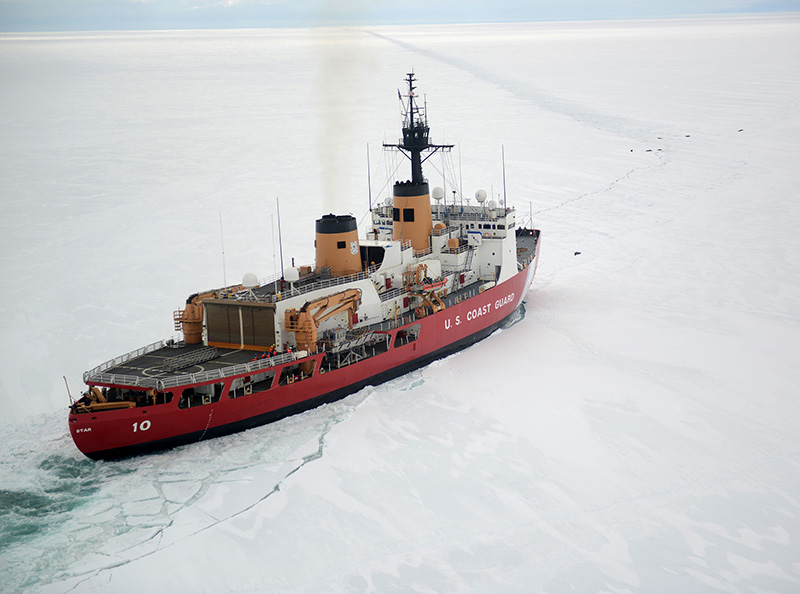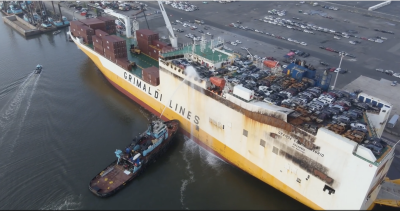The process of icebreaking involves more than using the biggest hammer and busting your way through.
To some, the 75,000-hp Coast Guard cutter Polar Star, with its more than 2" thick hull and 13,500 tons of weight, may seem like a very big hammer to throw at the ice. However, to the command and crew of the cutter, the vessel is a precision tool, that, when coupled with skill and tactics, can be a formidable weapon against the ice.
“The whole concept behind icebreaking is you have to have a place for the broken ice to go,” said Master Chief Petty Officer Gregory Zerfass, qualified ice pilot and command master chief aboard the Polar Star. “To plan for this you have to think in advance, to consider all of the different ice movement scenarios during favorable conditions.”
All of the planning comes together by researching the types of ice that may be ahead, the capabilities of the ship design and the appropriate tactics that can be used to tackle the elements and help make each situation work in the favor of the mission.
Ice conditions in the Arctic can be vastly different than those found in the Antarctic. In the north, the ice forms large floes that move continually with the wind and currents. However, the ice found off of Antarctica in the south is predominantly “fast ice,” or ice that is held fast (anchored in place) by surrounding land mass.
Fast ice can be new or single-year ice, or it can be older and tougher multi-year ice, or a combination of both. When these types of ice meld together, ice ridges form, creating a formidable barrier to the progress of icebreaking. For the icebreaker to traverse an ice ridge, it may have to back and ram the ridge multiple times in an effort to create weaknesses in the ice, eventually allowing the vessel to form a navigable path.
Additionally, fast ice that is being held or pinched into place by two land masses can be placed under immense pressure, squeezing the ice and causing friction between the ice and the cutter that slows the breaking process.
An icebreaker can be designed with attributes to overcome the variance of ice conditions. Built more than 40 years ago, the Polar Star and sistership Polar Sea, were precisely engineered with respect to hull shape, strength and weight. The rounded hull design of the Polar Star allows the vessel to pivot on its bow and swing the stern to port or starboard, helping facilitate freedom of movement when working under fast or anchored ice conditions. The vessel's ice horn — which acts as a saw blade allowing the cutter to rise up onto the ice and use its weight to cut through it — allows the Polar Star to continuously break ice up to 6-feet thick and back and ram ice up to 21-feet thick.

USCG graphic.
Once the cut is made, the cutter’s rounded hull helps push the broken ice to the right and left of the ship, forging a navigable path.

USCG graphic.
“The ship’s design allows us to cut the ice, but it is not so much weight and force, but much more about the management of the broken ice,” said Zerfass. “We have to be aware of how the broken ice is behaving behind us. It is possible that it can accumulate and cause a blockage in the channel, becoming a whole other concern.”
To help keep broken ice (also called brash ice) from clogging a channel, the vessel’s crew uses several different techniques to facilitate breaking and movement of ice, including a variety of different cuts.
“We will try to use these techniques to take advantage of conditions, such as wind, to help move the ice we are breaking,” said Zerfass. “Our ultimate goal is to have the channel ready and prepared for the arrival of commercial vessels and help them with a safe transit through the ice.”
Written by Coast Guard Chief Petty Officer David Mosley. This is an edited version of a post that originally appeared on the Coast Guard Compass blog. View the original.




.png.small.400x400.png)
